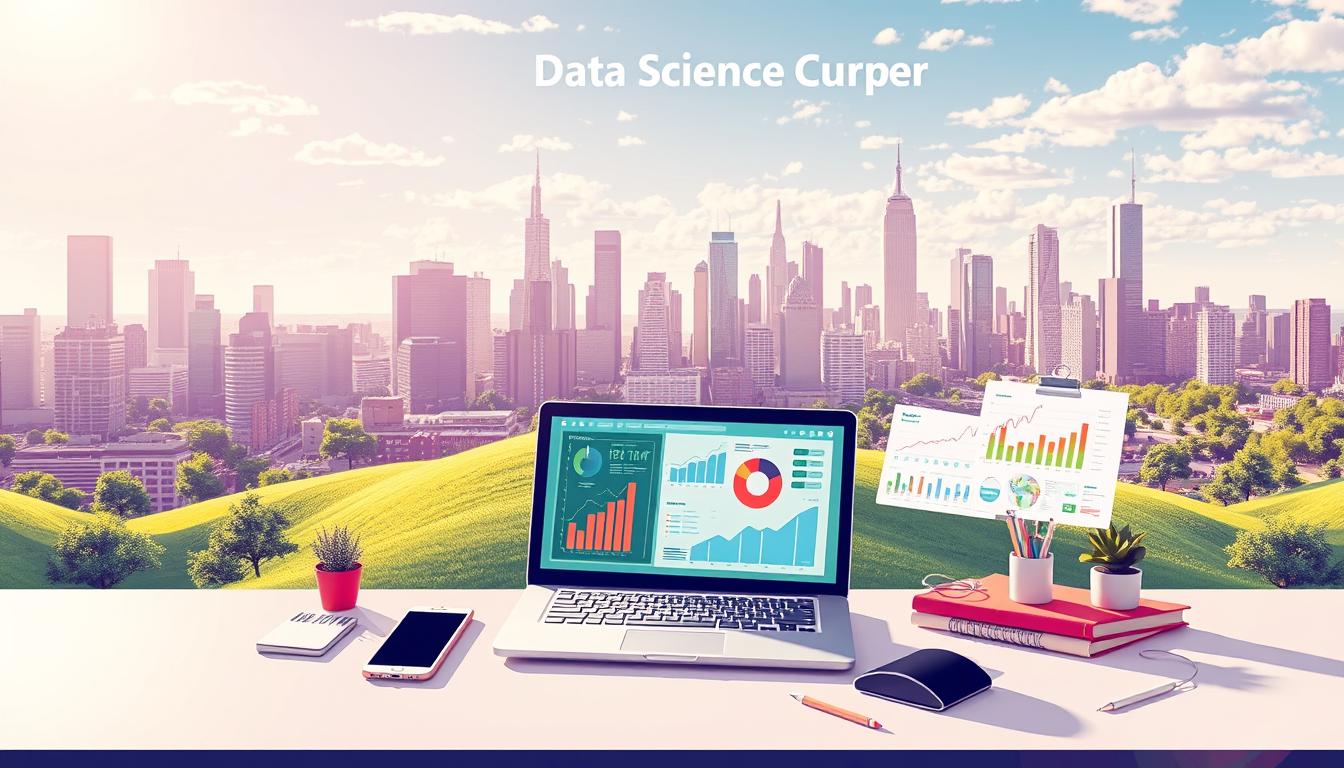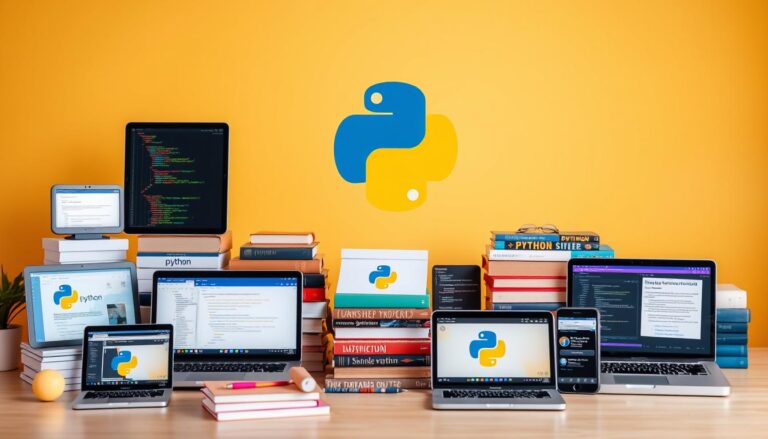Mastering Data Science: Tips and Techniques for Success
In today’s fast-paced, data-driven world, data science has emerged as a cornerstone of innovation and decision-making. This interdisciplinary field combines statistics, scientific computing, and domain expertise to uncover meaningful insights from information. Whether you’re a seasoned professional or just starting your journey, understanding data science can unlock new career opportunities and empower you to make informed, strategic decisions.
The role of a data scientist has become pivotal in shaping business outcomes. From improving loan services with machine learning models to developing advanced sensors for driverless vehicles, the applications of data science are vast and transformative. As industries evolve, so does the demand for skilled professionals who can harness the power of data to drive innovation and growth.
In this article, we’ll explore the essential tips and techniques for mastering data science. You’ll learn how to integrate statistics, computing, and domain knowledge to extract actionable insights. We’ll also discuss the evolving landscape of this field and why it’s more relevant now than ever. By the end of this guide, you’ll be equipped with the knowledge to navigate the world of advanced data techniques with confidence.
Key Takeaways
- Understand the core concepts of data science and its importance in today’s world.
- Learn how data science integrates statistics, computing, and domain expertise.
- Explore the evolution and relevance of data science across industries.
- Discover the benefits of mastering data science for career growth and decision-making.
- Gain insights into the structure of the article and what to expect.
Introduction to the World of Data Science
Discover the fascinating realm where datum transforms into actionable insights. Data science is more than just a field—it’s a powerful approach to problem-solving, blending science, technology, and mathematics to uncover hidden patterns and drive innovation.
At its core, data science involves processing datum to extract meaningful information. This process isn’t just about numbers; it’s about telling stories that guide decision-making. By integrating statistics, computing, and domain expertise, professionals can turn raw information into strategies that shape industries.
| Field | Focus | Example |
|---|---|---|
| Data Science | Extracting insights from data | Predicting customer behavior |
| Data Analytics | Descriptive analysis | Summarizing sales trends |
| Machine Learning | Model development | Automated recommendations |
“Data is the new oil—a valuable resource that, when refined, powers innovation and growth.”
Understanding data is crucial in today’s digital economy. As industries evolve, the demand for professionals who can harness the power of datum grows. Whether you’re analyzing market trends or developing AI models, mastering data science opens doors to new opportunities and empowers you to make informed decisions.
Understanding the Basics of Data Science
At its core, data science is about transforming information into insights. A scientist in this field uses various techniques to uncover patterns and solve problems. This process involves more than just numbers—it’s about telling stories that guide decisions.
The role of a scientist involves using analysis to extract meaningful information. This isn’t just about statistics; it’s about applying methods to turn raw information into actionable strategies. By integrating different approaches, professionals can tackle complex challenges effectively.
Machinery plays a crucial role in this process. From computing devices to automated tools, these technologies enable efficient analysis. Machine learning, for instance, helps in gaining automated insights, making the process faster and more accurate.
Starting with basic methods is essential. Techniques like data cleaning and visualization form the entry point. These steps help in preparing information for more complex tasks. However, challenges arise when moving from raw information to meaningful insights. Ensuring data quality and relevance is key to overcoming these hurdles.
For example, basic analysis can inform more complex projects. By laying a solid foundation, professionals can build sophisticated models and solutions. This approach ensures that efforts are focused and effective, leading to better outcomes.
Exploring Data Collection and Preparation Techniques
Gathering and preparing information is the backbone of any successful analysis. It’s the first step in turning raw inputs into actionable insights that drive decisions.
Gathering and Acquiring Information
Accurate and relevant collection is crucial. Whether it’s through surveys, sensors, or public records, the quality of your inputs directly impacts your outcomes. For instance, in business settings, precise collection helps leaders make informed choices. Methods like web scraping or API integration ensure efficiency and scalability, making the process smoother and more reliable.
Preparation and Cleaning
Once gathered, the next step is cleaning and preprocessing. This involves removing duplicates, handling missing values, and standardizing formats. These steps ensure consistency and accuracy, which are vital for reliable analysis. Proper preparation avoids common pitfalls like biased models or misleading trends.
| Technique | Purpose | Example |
|---|---|---|
| Data Cleaning | Remove inaccuracies | Correcting typos |
| Standardization | Ensure consistency | Formatting dates |
| Feature Engineering | Enhance relevance | Creating new variables |
Thorough preparation can lead to significant successes. For example, a retail company might use clean data to forecast sales accurately, optimizing inventory and boosting profits. By focusing on these foundational steps, professionals can build a robust framework for analysis and decision-making.
Advanced Data Analysis and Visualization Methods
Unlocking deeper insights from information requires advanced techniques and tools. This section explores how statistical methods and visualization tools can transform your analysis.
Statistical Analysis Foundations
Statistical techniques form the backbone of advanced analysis. Methods like regression analysis and hypothesis testing help uncover patterns and relationships. These skills are essential for making accurate predictions and informed decisions.
Effective Data Visualization Tools
Visualization tools turn complex datasets into clear, actionable insights. Tools like Tableau and Power BI create interactive and dynamic visuals, making data accessible to everyone. These tools are key for presenting findings effectively.
From Graphs to Interactive Dashboards
Modern visualization goes beyond static graphs. Interactive dashboards allow real-time exploration of data, enabling deeper understanding and better decision-making. These dashboards are powerful tools for businesses and analysts alike.
| Tool | Features | Best For |
|---|---|---|
| Tableau | Interactive visuals, real-time updates | Complex datasets |
| Power BI | Business analytics, cloud integration | Enterprise solutions |
| Python | Customizable, machine learning integration | Advanced analysis |
Machine Learning: Integrating Models and Predictions
Machine learning stands as a cornerstone of modern innovation, bridging the gap between theoretical concepts and practical applications. It empowers professionals to uncover hidden patterns, make accurate predictions, and drive informed decisions across various industries.
Popular Algorithms and Their Applications
From healthcare to finance, machine learning algorithms are transforming how we approach complex challenges. Linear Regression, for instance, is widely used for predicting continuous outcomes, such as house prices. Decision Trees offer clear, interpretable models, making them ideal for classification tasks like customer segmentation. Neural Networks, including deep learning models, excel in recognizing patterns in images and speech, revolutionizing fields like autonomous driving and voice recognition.
| Algorithm | Application | Example |
|---|---|---|
| Linear Regression | Prediction of continuous outcomes | Forecasting stock prices |
| Decision Trees | Classification and decision-making | Customer churn prediction |
| Neural Networks | Pattern recognition and complex modeling | Image classification |
Building and Training Models
Constructing effective models involves careful preparation and iterative refinement. Start by gathering high-quality inputs and defining clear objectives. Next, select the most suitable algorithm for your task. Training the model involves feeding it your prepared data, adjusting parameters to optimize performance. Validation is crucial to ensure accuracy and reliability. Deploying the model allows it to generate predictions and insights, driving real-world applications.
By integrating machine learning into your workflow, you can unlock new possibilities for growth and innovation. Whether you’re a novice or an experienced professional, mastering these techniques will empower you to make a meaningful impact in your field.
Data Science vs. Related Fields

Understanding the distinctions between data science and related fields like data analytics and business analytics is crucial for professionals seeking to navigate this evolving landscape. Each field addresses unique challenges and offers distinct value, making them complementary yet separate in their applications.
Comparing Data Analytics and Business Analytics
Data analytics focuses on uncovering patterns and extracting insights from information, often using statistical methods and tools. Business analytics, however, is more strategic, aiming to drive decision-making by aligning insights with organizational goals. While data analytics might identify trends, business analytics ensures these trends translate into actionable strategies.
- Data analytics: Focuses on identifying patterns and trends in information.
- Business analytics: Aims to align insights with business objectives for informed decision-making.
Role of Data Engineering in the Ecosystem
Data engineering plays a vital role by building and maintaining the infrastructure that supports data science and analytics. Engineers design systems to handle information flow efficiently, ensuring data quality and accessibility. This backbone allows scientists and analysts to focus on higher-level problem-solving.
- Data engineers design and manage data pipelines and infrastructure.
- They ensure data quality, security, and accessibility for analysis.
In summary, while data science encompasses a broad range of activities focused on extracting insights from information, data analytics and business analytics address specific problems with targeted techniques. Data engineering supports these efforts by providing the necessary infrastructure, ensuring timely and efficient access to information. Understanding these roles helps professionals choose the path that best aligns with their skills and interests.
Career Opportunities in Data Science
The field of data science offers a wide array of career opportunities, making it a dynamic and rewarding choice for professionals. With the increasing demand for skilled individuals who can interpret and apply information effectively, the job market is thriving. Whether you’re a data analyst, scientist, or machine learning engineer, there’s a path tailored to your skills and interests.
Paths for Data Analysts and Scientists
Data analysts focus on interpreting information to guide business decisions, often using techniques like statistical analysis and visualization tools. Data scientists, on the other hand, delve deeper into complex problem-solving, employing advanced programs to uncover hidden patterns and make accurate predictions. Both roles require a strong foundation in analytical techniques and the ability to translate findings into actionable strategies.
- Data analysts specialize in descriptive analysis, identifying trends and creating visual representations.
- Data scientists use predictive and prescriptive techniques to forecast outcomes and recommend actions.
- Both roles rely heavily on technical techniques and programs to process and analyze information.
Emerging Roles in Machine Learning Engineering
Machine learning engineering has emerged as a cutting-edge field, blending traditional data science with software engineering. Professionals in this role design and deploy models that enable systems to learn and improve over time. This role is ideal for those passionate about automation and artificial intelligence.
- Machine learning engineers develop algorithms that power predictive systems and automate decision-making processes.
- They work closely with data scientists to integrate models into production environments.
- This role requires expertise in programming languages like Python and frameworks like TensorFlow.
Companies like Google, Amazon, and Microsoft are actively seeking talent with specialized skills in machine learning and advanced data analysis. Staying updated with industry trends and continuously improving your technical skills will help you navigate this evolving landscape. Remember, the key to success lies in mastering both the techniques and the programs that drive innovation in this field.
Harnessing Big Data and Cloud Computing
Cloud computing and big data systems are revolutionizing how we process and analyze information. These technologies enable faster, more efficient handling of massive datasets, making them indispensable in today’s digital landscape.
Mathematics plays a crucial role in supporting large-scale analysis. Advanced algorithms and statistical models rely on mathematical foundations to uncover patterns and insights, ensuring accurate and reliable results.
| System | Feature | Application |
|---|---|---|
| Cloud Platforms | Scalability | Handling massive datasets |
| Distributed Systems | Parallel Processing | Rapid data analysis |
| Automated Tools | Efficiency | Streamlined workflows |
Automated cleaning processes significantly improve data integrity. By removing inaccuracies and standardizing formats, these systems ensure high-quality information for analysis.
Cloud computing’s practical applications are vast. From real-time analytics to predictive modeling, these technologies empower organizations to make informed decisions quickly and effectively.
Data Ethics and Responsible Use
In the dynamic landscape of modern technology, ethical considerations play a vital role in guiding responsible practices. As professionals, it’s crucial to handle information with care to ensure trust and integrity.
Ensuring Data Privacy and Protection
Protecting sensitive information is a top priority. Tools like encryption and secure access controls are essential to safeguard against unauthorized use. For instance, cloud platforms often use advanced security measures to handle large datasets, ensuring privacy while allowing efficient access.
A key statistic from recent studies shows that over 70% of organizations have implemented stricter data protection policies, reducing breaches by nearly 40%. This highlights the importance of robust security frameworks in maintaining trust.
Mitigating Bias in Data Collection
Bias can significantly impact the reliability of insights. To address this, it’s important to use diverse data samples and employ fairness metrics. For example, a recent study ensured unbiased AI systems by validating models across varied demographic groups.
Regular audits and transparency in methods help identify and mitigate bias. By fostering an ethical approach, professionals can ensure equitable outcomes and maintain the integrity of their work.
By integrating these ethical practices, professionals can build trust and ensure responsible use of information. Establishing clear guidelines and continuously monitoring practices are essential steps in upholding high standards.
Techniques for Effective Data Cleaning and Preprocessing
Effective data cleaning and preprocessing are essential steps in preparing information for analysis. Computers and specialized software play a vital role in streamlining these processes, ensuring accuracy and efficiency. In this section, we’ll explore automation tools, best practices, and a step-by-step course to transform raw information into high-quality datasets.
Automation in Data Wrangling
Automation has revolutionized the data wrangling process, making it faster and more efficient. Tools like Python’s Pandas library and R’s dplyr automate repetitive tasks such as handling missing values and standardizing formats. These tools are particularly useful for large datasets, where manual cleaning would be time-consuming and error-prone.
For instance, automated scripts can detect and correct inconsistencies in data formats, ensuring consistency across the entire dataset. This not only saves time but also reduces the risk of human error, leading to more reliable results.
Best Practices for Data Quality
Maintaining high data quality requires a structured approach. Start by profiling your information to understand its characteristics, such as distributions, missing values, and outliers. This step helps identify potential issues early in the process.
A robust process involves several key steps:
– Data Profiling: Understand the characteristics of your information.
– Data Cleaning: Remove duplicates, handle missing values, and standardize formats.
– Data Validation: Ensure the information meets predefined quality criteria.
– Data Transformation: Convert data into a format suitable for analysis.
– Data Enrichment: Enhance the information by adding relevant context or features.
Regular audits and documentation are also crucial. By maintaining a record of your cleaning and preprocessing steps, you can ensure transparency and reproducibility. This is especially important in collaborative environments where multiple stakeholders may need to understand the process.
Common challenges in data cleaning include handling missing information and dealing with inconsistent formats. For example, missing values can be addressed through imputation methods like mean, median, or imputation using machine learning models. Inconsistent formats can be standardized using automated scripts, ensuring that all information follows a uniform structure.
By following these best practices and leveraging automation tools, you can ensure that your information is accurate, consistent, and ready for analysis. This structured approach not only improves the quality of your insights but also enhances the reliability of your decision-making processes.
Core Tools and Technologies Empowering Data Science
Modern data analysis relies heavily on powerful tools and technologies. These resources enable professionals to process information efficiently, uncover insights, and drive innovation. From programming languages to big data platforms, the right technologies can transform how companies operate and scale their insights.
Python, R, and SQL Essentials
Python, R, and SQL are the backbone of modern analysis. Python, with its simplicity and versatility, is widely used for machine learning and automation. R excels in statistical computing, making it a favorite among researchers. SQL, meanwhile, remains indispensable for managing and querying databases. Together, these tools provide a robust framework for extracting actionable insights.
Leveraging Big Data Platforms
Big data platforms like Apache Spark and Hadoop are revolutionizing how companies handle large-scale information. These technologies enable rapid processing and analysis of massive datasets, ensuring that businesses can make informed decisions quickly. For instance, Apache Kafka processes over 1 million messages per second, making it a critical tool for real-time data streaming.
| Tool | Application | Example |
|---|---|---|
| Python | Machine Learning | Predictive Modeling |
| R | Statistical Analysis | Data Visualization |
| Apache Spark | Big Data Processing | Real-time Analytics |
Choosing the right machine learning algorithm is crucial for achieving accurate results. For example, linear regression is ideal for predicting continuous outcomes, while decision trees are better suited for classification tasks. By selecting the appropriate algorithm, companies can ensure their models are both effective and efficient.
Staying updated with the latest advancements in these tools and technologies is essential. Whether you’re a beginner or an experienced professional, continuous learning will help you master the ever-evolving landscape of data analysis and machine learning.
The Data Science Life Cycle: From Acquisition to Communication
Every successful project follows a clear process, and the data science life cycle is no exception. This structured approach ensures that each phase builds on the last, leading to actionable insights and informed decisions.
Step-by-Step Process Overview
The life cycle begins with acquisition, where information is gathered from various sources. This is followed by exploration, where analysts examine the information to understand patterns and potential issues. The next phase, , involves using algorithms to create predictive or descriptive models. After models are built, they undergo validation to ensure accuracy and reliability. Finally, insights are communicated to stakeholders through clear reports and visualizations.
| Phase | Purpose | Example |
|---|---|---|
| Acquisition | Gathering information from various sources | Web scraping, sensor data |
| Exploration | Identifying patterns and anomalies | Statistical analysis |
| Modeling | Creating predictive models | Machine learning algorithms |
| Validation | Ensuring model accuracy | Testing with sample data |
| Communication | Presenting insights clearly | Interactive dashboards |
Interpreting and Presenting Insights
The final phase, communication, is crucial for turning insights into actions. Analysts use visualization tools to present findings in a way that’s easy for everyone to understand. Whether through charts, graphs, or interactive dashboards, the goal is to enable stakeholders to make informed decisions confidently.
By following this structured approach, professionals can ensure that each project is both efficient and effective, leading to better decision-making and meaningful outcomes.
Historical Milestones in Data Science
The journey of data science is a fascinating story that spans decades, shaped by visionary minds and groundbreaking discoveries. From its early beginnings to its current status as a revolutionary field, data science has evolved through key milestones that have transformed how we understand and utilize information.
Early Developments and Pioneering Concepts
The term “data science” was first proposed in 1974 by Peter Naur, a Danish computer scientist, as an alternative name for computer science. This marked the beginning of a new era in how we approach information. In the 1990s, the concept gained momentum, with the first conference dedicated to data science held in 1996 by the International Federation of Classification Societies.
| Year | Contributor | Contribution |
|---|---|---|
| 1974 | Peter Naur | Proposed the term “data science” |
| 1996 | International Federation of Classification Societies | First conference on data science |
| 2008 | DJ Patil and Jeff Hammerbacher | Popularized the term “data scientist” |
In 2008, DJ Patil and Jeff Hammerbacher popularized the term “data scientist,” further solidifying the field’s identity. Their work laid the groundwork for modern applications, where data scientists use computer science concepts to create innovative products that drive business decisions and technological advancements.
These early developments weren’t just about terminology; they represented a shift in how we process and analyze information. The integration of computer science principles into data analysis led to the creation of powerful tools and methodologies, enabling professionals to extract insights more efficiently.
By understanding the historical milestones, we can appreciate how far data science has come. From its humble beginnings to its current applications in machine learning and big data, the field continues to evolve, offering new opportunities for innovation and growth.
Innovative Trends Shaping the Future of Data Science
The future of data science is unfolding with groundbreaking technologies and techniques that promise to revolutionize how we analyze and apply information. As we look ahead, several emerging trends are set to transform the landscape, offering new opportunities for innovation and efficiency.
Emerging Technologies and Techniques
One of the most exciting developments is the rise of automated machine learning (AutoML). This technology enables even non-experts to build sophisticated models, democratizing access to advanced analytics. Another promising trend is the integration of edge computing, which processes information closer to its source, reducing latency and enhancing real-time decision-making.
| Technology | Focus | Application |
|---|---|---|
| AutoML | Simplifying model development | Enabling non-experts to build predictive models |
| Edge Computing | Reducing latency | Real-time analytics in IoT devices |
| Quantum Computing | Enhancing processing power | Optimizing complex algorithms |
Programming Innovations
Programming languages like Python and Julia are evolving to meet the demands of modern data analysis. Python’s growing ecosystem of libraries, such as PyTorch and Scikit-learn, continues to empower data analysts and scientists alike. Meanwhile, Julia’s speed and dynamism make it an attractive choice for high-performance computing tasks.
Strategies for Data Analysts
Leading data analysts are embracing cross-functional collaboration and continuous learning to stay ahead. By integrating insights from diverse domains, they can uncover hidden patterns and deliver actionable recommendations. Real-time analytics is another area where data analysts are making a significant impact, enabling organizations to respond swiftly to market changes.
Efficiency and Accuracy
These trends not only enhance efficiency but also improve predictive accuracy. For instance, advancements in neural networks are enabling more precise forecasts, while natural language processing (NLP) is making unstructured information more accessible for analysis.
As these innovations continue to unfold, staying updated and adaptable will be crucial for professionals in the field. By embracing these emerging trends, data analysts and scientists can unlock new possibilities and drive meaningful outcomes in their organizations.
Practical Tips and Techniques for Data Science Success

Mastering the art of turning information into actionable insights requires a blend of continuous learning and practical application. Whether you’re a seasoned professional or just starting out, staying ahead in this fast-evolving field demands a strategic approach.
Continuous Research and Learning are at the heart of professional growth. Engaging in cutting-edge research and pursuing advanced degree programs can significantly enhance your expertise. For instance, a master’s degree in a related field can deepen your understanding of statistical methods and computational techniques, while certifications in machine learning or data visualization can keep you industry-ready.
Industry trends play a crucial role in shaping practical techniques. Stay updated on emerging tools and methodologies, as they often reflect the latest advancements in the field. For example, the rise of automated machine learning (AutoML) has made it easier for professionals to develop predictive models without extensive coding knowledge.
When tackling complex problems, break them into manageable steps. Start with exploratory analysis to understand the dataset, then move on to modeling. Always validate your findings to ensure accuracy. Real-world examples, like using predictive analytics in healthcare to improve patient outcomes, demonstrate how these techniques can drive meaningful change.
Empower your career by embracing lifelong learning and staying adaptable. The ever-changing landscape of this field offers countless opportunities for growth. By integrating these practical tips into your workflow, you’ll not only enhance your skills but also contribute to innovative solutions that shape industries.
Conclusion
As we conclude our journey through the world of knowledge and experience in data science, it’s clear that this field is a powerful driver of innovation and informed decision-making. By mastering the techniques we’ve explored—such as machine learning, advanced analysis, and ethical practices—you can unlock new opportunities for growth and problem-solving.
Continuous learning is key to staying ahead in this evolving landscape. Hands-on experience, combined with a strong foundation of knowledge, will empower you to tackle complex challenges and deliver impactful solutions. Remember, the true value lies in blending technical expertise with practical application.
Now is the time to apply these insights to your projects and explore the transformative potential of data science. We invite you to engage further with resources, communities, and tools to deepen your expertise. Embrace the challenges and opportunities ahead with confidence and curiosity.
FAQ
What does a data scientist do?
What skills are needed to become a data scientist?
How is data science different from data analytics?
What tools do data scientists commonly use?
What career paths are available in data science?
How can I start learning data science?
Why is data ethics important in data science?
What is the role of machine learning in data science?
How do I handle missing data?
What is the importance of data visualization?
Source Links
- What is Data Science? | IBM – https://www.ibm.com/think/topics/data-science
- Data Science | Harvard University – https://pll.harvard.edu/subject/data-science
- What Is Data Science? – https://ischoolonline.berkeley.edu/data-science/what-is-data-science/
- Introduction to Data and Data Science Course – 365 Data Science – https://365datascience.com/courses/introduction-to-data-and-data-science/
- Introduction to Data Science | Great Learning – https://www.mygreatlearning.com/academy/learn-for-free/courses/introduction-to-data-science
- Introduction to Data Science – https://www.coursera.org/specializations/introduction-data-science
- Learning Data Science: Understanding the Basics Online Class | LinkedIn Learning, formerly Lynda.com – https://www.linkedin.com/learning/learning-data-science-understanding-the-basics
- What is Data Science? – Data Science Explained – AWS – https://aws.amazon.com/what-is/data-science/
- What is Data Science? – https://www.coursera.org/learn/what-is-datascience
- Data science – https://en.wikipedia.org/wiki/Data_science
- Data Analytics vs. Data Science: A Breakdown – https://graduate.northeastern.edu/knowledge-hub/data-analytics-vs-data-science/
- Data Science vs Data Analytics: Definitions and Differences – https://www.qlik.com/us/data-analytics/data-science-vs-data-analytics
- What is data science – https://seas.harvard.edu/news/what-data-science-definition-skills-applications-more
- Data Science – https://www.coursera.org/specializations/jhu-data-science
- Data Science Toolbox: The Top Tools You Need to Know – https://www.gsdcouncil.org/blogs/data-science-toolbox-the-top-tools-you-need-to-know
- Top 21 Big Data Tools That Empower Data Wizards – https://www.projectpro.io/article/big-data-tools/679
- Data Science for Beginners – A Complete Guide – GeeksforGeeks – https://www.geeksforgeeks.org/data-science-for-beginners/
- What Is Data Science? – https://www.oracle.com/what-is-data-science/
- Academic Programs — School of Data Science – https://datascience.virginia.edu/academics







